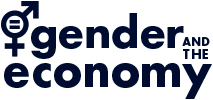To support rigorous research, GATE offers annual research grants to qualified applicants.
2024-2025 Grant Recipients

Understanding and Addressing the Mental Health Impact of Unpaid Care Work Through Bogotá, Colombia’s District Care System
Unpaid care work (e.g., childcare and eldercare) can be deeply rewarding, but can also create severe or chronic stress, impacting care workers’ mental health. Globally, women spend considerably more time on unpaid care work than men, putting them at a higher risk of adverse mental health consequences. With global projections suggesting a rising demand for unpaid care work, countries must invest in building more equitable and sustainable care economies that better support (women) unpaid caregivers. Bogotá, Colombia’s recently launched District Care System (DCS), a city-level initiative to redistribute and reduce women’s unpaid care work, is one such example of this necessary investment. The DCS was built, however, without a clear understanding of the impact of unpaid care work on women’s mental health. This research investigates the mental health impact of providing unpaid child and eldercare for women living in Bogotá and how policies and programs (such as the DCS) might mitigate this impact.
Revisiting Racial Stereotypes in Canada
Canada's socio-cultural landscape has transformed dramatically in recent years due to evolving immigration patterns, cultural integration, and significant socio-political events. These changes have highlighted the need to refresh our understanding of racial-ethnic stereotypes to accurately capture the realities of contemporary Canadian society. Traditionally, studies of social dynamics have relied on broad categories, such as "Asian" or "Arab," to describe various sub-groups. However, the complexity of today's diverse population calls for a more nuanced exploration of specific racial and ethnic groups within Canada. This project aims to develop a comprehensive classification of racial groups and analyze societal perceptions of these groups based on attributes such as warmth, competence, perceived status, and cultural foreignness. A particular focus will be placed on exploring the stereotypes associated with Indigenous groups, including First Nations, Métis, and Inuit, as well as individuals of mixed racial backgrounds. By delving into these subtleties, this study seeks to uncover how racial stereotypes have evolved amid Canada's shifting demographics. The insights gained will enhance our understanding of social dynamics and inform public perceptions and policy-making, fostering a more inclusive and informed society.
The Double Child Penalty
Mothers whose children start school relatively late face not only the typical motherhood penalty, but also an additional, unique penalty due to their child having to wait an extra year to enroll in school. This project investigates this issue in the context of limited preschool access and more persistent gender norms regarding childcare. Research in Denmark, a country with universal childcare, has shown that being old for grade increases maternal employment. Using confidential administrative data from Chile that links families with their educational and labour outcomes, this project will follow families through time to see if the positive effect of students starting school relatively late might be offset by the negative effects on their mothers' employment.
Knitting Matrilineal Lines: Understanding the Economic and Cultural Values of Cowichan Sweaters
Cowichan knitting is a traditional form of arts-entrepreneurship that evolved from historic weaving practices of the Cowichan People, whose traditional territory extends from the Southeast of what is now known as Vancouver Island, through the San Juan Islands, to what is now known as Washington State. The Cowichan Sweater was developed by Cowichan women at a time when Indigenous Peoples in Canada – particularly Indigenous women – were restricted in the types of work they could do. Now, the Cowichan Sweater has become an iconic symbol of Indigenous arts in Canada. However, the innovative Cowichan Knitters who developed this artform are often left out of the stories that we tell about it. In this project, we seek to listen to and to learn from the stories of Cowichan Knitters who have helped to develop the historic market for the Cowichan Sweater and those who are working in this market today. We expect to learn more about how traditional Cowichan Knitters are sharing stories and cultural teachings through their work, and how they are innovating to create products that are relevant for Cowichan and non-Cowichan customers. We also expect to learn more about the importance of flexible self-employment to some Indigenous women, and the importance of working in a cultural medium to the well-being of the Knitters and of their communities. In this project, we seek to honour the Cowichan Knitters who have developed such an important cultural artform, which ties together the stories and teachings from the past with current and future generations.
The Impact of Patient-Physician Sex Concordance on Health Outcomes: Evidence From Ontario's Emergency Departments
Gender disparities in healthcare greatly disadvantage women. Men often receive more prompt and appropriate interventions, whereas anecdotal evidence suggests that many women feel ignored and blamed for their own symptoms. Such unequal treatment has adverse consequences on women's health outcomes, including prolonged delays for medical referrals, examinations, and diagnoses, an escalated risk of misdiagnoses, and a growing distrust in healthcare services. Understanding such biases in relation to women’s health in Canada is of crucial importance to policymakers who wish to optimally design future health reforms. However, the causal factors behind these disparities and potential policy solutions remain unexplored. A growing body of literature attributes the health gap to the different approaches physicians use to evaluate patients of different genders. Gender or sex concordance - where a physician and their patient are of the same gender or sex - could play a role in these evaluations, if the similar characteristics between the two agents enable better communication and a greater understanding of the conditions and health issues that a patient is likely to have. This study will thus determine the causal effects of patient-physician sex concordance on patient health outcomes in Ontario, using rich visit-level emergency department data and quasi-experimental methods.
Gender Recognition in Science
In recent years, the connection between innovation and gender has gained significant attention from decision-makers, scientists, and industry leaders. However, the lack of gender diversity in innovation and science remains a critical issue, with women significantly underrepresented in STEM fields and less likely to become inventors. This underrepresentation results in societal losses and diminishes the benefits of diverse role models. This research project addresses the persistent gender disparity in scientific innovation by analyzing the universe of scientific publications to investigate the Matthew effect (where recognition favors prominent authors) and the Matilda effect (systematic under-recognition of women's contributions). The findings will inform policies to promote gender equity, improve recognition practices, and reduce biases in academic achievement, fostering a more inclusive scientific community.
Neither Here nor There: Balancing Work, Life and Professional Identity for Skilled Immigrant Women
Immigrant women are often seen as secondary workers who only join the labour market as a response to family needs, and many might become employed in jobs that require lower skills than their education or credentials. However, when skilled immigrant women seek to enter the labour market to pursue their goals of finding a job in their trained profession, they might face common barriers like discrimination or lack of foreign credential recognition, which leads to a devaluation of their skills. I am interested in understanding how the changes in their professional identity during their immigration experience work-life boundary management, such as balancing parental duties with career advancement. Through this research, I seek to explore how skilled immigrant women wrestle with the dilemma of employment opportunities that might be “neither here nor there” in terms of their professional goals.
Who’s It for Anyway? Non-Black Consumers’ Perceptions of Black Atypicality for Racialized Cosmetic Products
The beauty and cosmetic industry (i.e., hair care, skin care, makeup, etc.) in the U.S. is forecasted to generate approximately $130+ billion CAD in 2024 (Statista, 2024). Despite this enormous potential, the beauty industry continues to experience challenges relating to inequity, especially as it relates Black vs. non-Black women. One manifestation of this racial inequity is in the form of representation: despite the U.S. and Canada’s racioethnic diversity, the models featured in advertising material for consumer products are often White. This project investigates barriers relating to representation for Black women in promotional material. In particular, we investigate how non-Black consumers evaluate different categories of cosmetic products as a function of who’s featured in the product advertising.
Skill-Based Hiring: Enhancing Matching Efficiency and Diversity in the Workforce?
This research investigates how firms’ approach to skill-based hiring—such as eliminating degree requirements and signaling openness to candidates who have acquired skills via alternative routes—impact the applicant pool in terms of job-required skills, educational background, race, and gender. Previous research using administrative data has shown that college education is a major determinant of occupational sorting and, consequently, lifetime earnings. Other studies on inequality have documented an increase in degree requirements since the last century, even in occupations where most managers did not have one—a trend that now appears to be reversing. However, research has not focused on how degree requirements influence the supply side of hiring and how they may affect occupational segregation. In a theoretical framework, I propose that by focusing on skills, firms can attract job applicants whose experience better fits the tasks required for the job while increasing opportunities for candidates from lower-income backgrounds, women, and Black or Hispanic individuals. Conversely, by maintaining strict degree requirements, employers may deter skilled applicants from applying. However, there are potential risks in adopting skill-based policies, such as increasing the variance in candidates’ fit, prolonging the hiring process, and causing candidates to perceive the lack of requirements as a signal that the job is of lower quality. To test these hypotheses, researchers will partner with two firms to conduct a field experiment using a reverse-audit methodology as they actively hire for positions in software, marketing, and office administration.
A Warm Welcome or a Cold Connotation? Welcoming Language Reduces Belonging
Many organizations today emphasize their commitment to inclusivity by “welcoming” applications from underrepresented groups. For instance, a job posting from Canadian Tire states: “We welcome and encourage candidates from equity-seeking groups such as people who identify as racialized, Indigenous, 2SLGBTQIA+, women, people with disabilities, and beyond.” Despite the widespread adoption of this strategy to attract a diverse pool of applicants, there is limited research on how “welcoming” language in job advertisements influences targeted job seekers’ anticipated sense of belonging and attraction to the organization. We theorize that while “welcome” may be intended as a warm greeting, it may also suggest that those being welcomed are “new” and are being received into a space where members of their group are not typically found, inadvertently sending a counterproductive message to the very individuals it aims to attract. Using a combination of naturalistic studies and pre-registered experiments, this project will first explore the prevalence of welcoming versus belonging language in job ads and diversity statements, and then deductively test the impact of welcoming language on job candidates’ anticipated sense of belonging and attraction to the organization.
The Valuation of Work in the Care Economy: Examining the Impact of Government Subsidized Child Care on the Labour Market of Providers
Despite an extensive body of literature documenting the importance of early childhood education and care for mothers and children, little is known about the unique labour market of its providers. We investigate how the introduction of universal childcare in Quebec impacted the welfare and composition of workers in the childcare sector. The predicted effects of subsidies on providers are ambiguous. On the one hand, such programs create an unexpected and large surge in the demand for childcare labour, which, in theory, may lead to improved compensation and working conditions. On the other hand, if the government emerges as a major employer of childcare workers, such positive effects may be blunted. Individuals’ decisions to enter and remain in this profession therefore depend on how policymakers address the tension between the quality and the quantity of publicly funded care. This project will provide policy-relevant evidence on how government decisions affect a highly gender-segmented and under-researched workforce. Our study will also help evaluate whether government-supported childcare programs generate welfare-enhancing outcomes for childcare workers in a way that reflects the social value of their work.
Understanding and Mitigating AI-Facilitated Image-Based Sexual Abuse
The rise of AI technologies, such as deepfakes and voice cloning, has intensified image-based sexual abuse (IBSA), including revenge pornography and sextortion. This study delves into the prevalence and dynamics of IBSA among young adults in Canada, highlighting the psychological and socioeconomic factors involved. By shedding light on AI’s role in facilitating IBSA, this research aims to inform practitioners on developing effective strategies and policies to protect vulnerable populations, ensuring digital safety, and promoting gender equity in the digital economy.
Highlighting Disadvantaged Over Advantaged Identities in DEI Communication
This research investigates the strategies people adopt to communicate their understanding of Diversity, Equity, and Inclusion (DEI) in various contexts. We use online surveys, lab experiments, and text analysis to show that people highlight their disadvantaged identities while hiding their advantaged identities to downplay competence and achievements in DEI communication. People do not adopt this strategy because they misunderstand DEI goals or the relevance of advantaged identities—instead they aim to gain strategic advantages. Despite being intuitive and prevalent, this strategy can be less convincing than anticipated. By revealing a common tendency to emphasize disadvantaged identities over advantaged ones, this research hopes to highlight potential gaps in current DEI narratives that could be addressed to create more effective communications.
Breaking Apart the “Bamboo Ceiling” in Canada
Despite the Asian immigrant population in the United States thriving academically and professionally, Asian Americans remain under-represented in organizational leadership, a phenomenon named the “bamboo ceiling.” While this pattern is likely occurring in Canada as well, there has not yet been a comprehensive study in a Canadian context. Moreover, current explanations have not yet considered the impact of language as a contributing factor in the perception of ethnic minority leaders. The project addresses these gaps by identifying the bamboo ceiling faced by East Asian individuals living in Canada and examining how linguistic bias contributes to the misperception of minority individuals as organizational leaders. By contextualizing the bamboo ceiling and deconstructing the challenges East Asian individuals face in obtaining top leadership positions, this work aims to mitigate existing biases and promote positive intergroup communication and relations at the workplace and across other settings.
Knowledge Sourcing and Gender: Are Women More Likely to Be Sourced?
The dissemination of knowledge throughout an organization is crucial, but it also requires labour. Frequent requests for information and ideas can lead to burnout or disengagement. Women often perform a disproportionate share of “office housework” and other non-promotable tasks within an organization. We explore whether this pattern extends to the knowledge space: Are women more likely to be relied upon as knowledge sources? In addition to performing certain types of labour, women may be perceived as more communal making them more likely to be approached with requests. However, when it comes to knowledge requests specifically, stereotypes about women’s competence might make them less likely to be sought out. In our first study, we will conduct an experiment to examine whether women are more likely to be drawn upon as knowledge sources. In a second study we will explore the potential individual and organizational consequences of being frequently relied upon as a knowledge source.
The Intergenerational Effects of Trade
International trade has had significant effects on various aspects of life, from employment to health outcomes, with impacts differing by skill, age, and gender. However, this literature has largely overlooked the long-term consequences of these trade shocks and the adjustment mechanisms available to future generations. This study aims to fill that gap by exploring how these shifts affect the college enrollment decisions of children from affected households, particularly girls, who may pursue more lucrative career paths due to changing household gender norms. Understanding these patterns could help address future wage and employment gaps between men and women.
To support rigorous research, GATE offers annual research grants to qualified applicants.
Since its launch in 2016, GATE has funded 61 researchers investigating topics such as the impact of CEO characteristics on the corporate gender gap, barriers to reporting sexual harassment and assault, increasing the number of girls and women pursuing STEM careers, and the double-bind that women face in entering the job market and advancing in their careers.
2024-2025 Grant Recipients

Understanding and Addressing the Mental Health Impact of Unpaid Care Work Through Bogotá, Colombia’s District Care System
Unpaid care work (e.g., childcare and eldercare) can be deeply rewarding, but can also create severe or chronic stress, impacting care workers’ mental health. Globally, women spend considerably more time on unpaid care work than men, putting them at a higher risk of adverse mental health consequences. With global projections suggesting a rising demand for unpaid care work, countries must invest in building more equitable and sustainable care economies that better support (women) unpaid caregivers. Bogotá, Colombia’s recently launched District Care System (DCS), a city-level initiative to redistribute and reduce women’s unpaid care work, is one such example of this necessary investment. The DCS was built, however, without a clear understanding of the impact of unpaid care work on women’s mental health. This research investigates the mental health impact of providing unpaid child and eldercare for women living in Bogotá and how policies and programs (such as the DCS) might mitigate this impact.
Revisiting Racial Stereotypes in Canada
Canada's socio-cultural landscape has transformed dramatically in recent years due to evolving immigration patterns, cultural integration, and significant socio-political events. These changes have highlighted the need to refresh our understanding of racial-ethnic stereotypes to accurately capture the realities of contemporary Canadian society. Traditionally, studies of social dynamics have relied on broad categories, such as "Asian" or "Arab," to describe various sub-groups. However, the complexity of today's diverse population calls for a more nuanced exploration of specific racial and ethnic groups within Canada. This project aims to develop a comprehensive classification of racial groups and analyze societal perceptions of these groups based on attributes such as warmth, competence, perceived status, and cultural foreignness. A particular focus will be placed on exploring the stereotypes associated with Indigenous groups, including First Nations, Métis, and Inuit, as well as individuals of mixed racial backgrounds. By delving into these subtleties, this study seeks to uncover how racial stereotypes have evolved amid Canada's shifting demographics. The insights gained will enhance our understanding of social dynamics and inform public perceptions and policy-making, fostering a more inclusive and informed society.
The Double Child Penalty
Mothers whose children start school relatively late face not only the typical motherhood penalty, but also an additional, unique penalty due to their child having to wait an extra year to enroll in school. This project investigates this issue in the context of limited preschool access and more persistent gender norms regarding childcare. Research in Denmark, a country with universal childcare, has shown that being old for grade increases maternal employment. Using confidential administrative data from Chile that links families with their educational and labour outcomes, this project will follow families through time to see if the positive effect of students starting school relatively late might be offset by the negative effects on their mothers' employment.
Knitting Matrilineal Lines: Understanding the Economic and Cultural Values of Cowichan Sweaters
Cowichan knitting is a traditional form of arts-entrepreneurship that evolved from historic weaving practices of the Cowichan People, whose traditional territory extends from the Southeast of what is now known as Vancouver Island, through the San Juan Islands, to what is now known as Washington State. The Cowichan Sweater was developed by Cowichan women at a time when Indigenous Peoples in Canada – particularly Indigenous women – were restricted in the types of work they could do. Now, the Cowichan Sweater has become an iconic symbol of Indigenous arts in Canada. However, the innovative Cowichan Knitters who developed this artform are often left out of the stories that we tell about it. In this project, we seek to listen to and to learn from the stories of Cowichan Knitters who have helped to develop the historic market for the Cowichan Sweater and those who are working in this market today. We expect to learn more about how traditional Cowichan Knitters are sharing stories and cultural teachings through their work, and how they are innovating to create products that are relevant for Cowichan and non-Cowichan customers. We also expect to learn more about the importance of flexible self-employment to some Indigenous women, and the importance of working in a cultural medium to the well-being of the Knitters and of their communities. In this project, we seek to honour the Cowichan Knitters who have developed such an important cultural artform, which ties together the stories and teachings from the past with current and future generations.
The Impact of Patient-Physician Sex Concordance on Health Outcomes: Evidence From Ontario's Emergency Departments
Gender disparities in healthcare greatly disadvantage women. Men often receive more prompt and appropriate interventions, whereas anecdotal evidence suggests that many women feel ignored and blamed for their own symptoms. Such unequal treatment has adverse consequences on women's health outcomes, including prolonged delays for medical referrals, examinations, and diagnoses, an escalated risk of misdiagnoses, and a growing distrust in healthcare services. Understanding such biases in relation to women’s health in Canada is of crucial importance to policymakers who wish to optimally design future health reforms. However, the causal factors behind these disparities and potential policy solutions remain unexplored. A growing body of literature attributes the health gap to the different approaches physicians use to evaluate patients of different genders. Gender or sex concordance - where a physician and their patient are of the same gender or sex - could play a role in these evaluations, if the similar characteristics between the two agents enable better communication and a greater understanding of the conditions and health issues that a patient is likely to have. This study will thus determine the causal effects of patient-physician sex concordance on patient health outcomes in Ontario, using rich visit-level emergency department data and quasi-experimental methods.
Gender Recognition in Science
In recent years, the connection between innovation and gender has gained significant attention from decision-makers, scientists, and industry leaders. However, the lack of gender diversity in innovation and science remains a critical issue, with women significantly underrepresented in STEM fields and less likely to become inventors. This underrepresentation results in societal losses and diminishes the benefits of diverse role models. This research project addresses the persistent gender disparity in scientific innovation by analyzing the universe of scientific publications to investigate the Matthew effect (where recognition favors prominent authors) and the Matilda effect (systematic under-recognition of women's contributions). The findings will inform policies to promote gender equity, improve recognition practices, and reduce biases in academic achievement, fostering a more inclusive scientific community.
Neither Here nor There: Balancing Work, Life and Professional Identity for Skilled Immigrant Women
Immigrant women are often seen as secondary workers who only join the labour market as a response to family needs, and many might become employed in jobs that require lower skills than their education or credentials. However, when skilled immigrant women seek to enter the labour market to pursue their goals of finding a job in their trained profession, they might face common barriers like discrimination or lack of foreign credential recognition, which leads to a devaluation of their skills. I am interested in understanding how the changes in their professional identity during their immigration experience work-life boundary management, such as balancing parental duties with career advancement. Through this research, I seek to explore how skilled immigrant women wrestle with the dilemma of employment opportunities that might be “neither here nor there” in terms of their professional goals.
Who’s It for Anyway? Non-Black Consumers’ Perceptions of Black Atypicality for Racialized Cosmetic Products
The beauty and cosmetic industry (i.e., hair care, skin care, makeup, etc.) in the U.S. is forecasted to generate approximately $130+ billion CAD in 2024 (Statista, 2024). Despite this enormous potential, the beauty industry continues to experience challenges relating to inequity, especially as it relates Black vs. non-Black women. One manifestation of this racial inequity is in the form of representation: despite the U.S. and Canada’s racioethnic diversity, the models featured in advertising material for consumer products are often White. This project investigates barriers relating to representation for Black women in promotional material. In particular, we investigate how non-Black consumers evaluate different categories of cosmetic products as a function of who’s featured in the product advertising.
Skill-Based Hiring: Enhancing Matching Efficiency and Diversity in the Workforce?
This research investigates how firms’ approach to skill-based hiring—such as eliminating degree requirements and signaling openness to candidates who have acquired skills via alternative routes—impact the applicant pool in terms of job-required skills, educational background, race, and gender. Previous research using administrative data has shown that college education is a major determinant of occupational sorting and, consequently, lifetime earnings. Other studies on inequality have documented an increase in degree requirements since the last century, even in occupations where most managers did not have one—a trend that now appears to be reversing. However, research has not focused on how degree requirements influence the supply side of hiring and how they may affect occupational segregation. In a theoretical framework, I propose that by focusing on skills, firms can attract job applicants whose experience better fits the tasks required for the job while increasing opportunities for candidates from lower-income backgrounds, women, and Black or Hispanic individuals. Conversely, by maintaining strict degree requirements, employers may deter skilled applicants from applying. However, there are potential risks in adopting skill-based policies, such as increasing the variance in candidates’ fit, prolonging the hiring process, and causing candidates to perceive the lack of requirements as a signal that the job is of lower quality. To test these hypotheses, researchers will partner with two firms to conduct a field experiment using a reverse-audit methodology as they actively hire for positions in software, marketing, and office administration.
A Warm Welcome or a Cold Connotation? Welcoming Language Reduces Belonging
Many organizations today emphasize their commitment to inclusivity by “welcoming” applications from underrepresented groups. For instance, a job posting from Canadian Tire states: “We welcome and encourage candidates from equity-seeking groups such as people who identify as racialized, Indigenous, 2SLGBTQIA+, women, people with disabilities, and beyond.” Despite the widespread adoption of this strategy to attract a diverse pool of applicants, there is limited research on how “welcoming” language in job advertisements influences targeted job seekers’ anticipated sense of belonging and attraction to the organization. We theorize that while “welcome” may be intended as a warm greeting, it may also suggest that those being welcomed are “new” and are being received into a space where members of their group are not typically found, inadvertently sending a counterproductive message to the very individuals it aims to attract. Using a combination of naturalistic studies and pre-registered experiments, this project will first explore the prevalence of welcoming versus belonging language in job ads and diversity statements, and then deductively test the impact of welcoming language on job candidates’ anticipated sense of belonging and attraction to the organization.
The Valuation of Work in the Care Economy: Examining the Impact of Government Subsidized Child Care on the Labour Market of Providers
Despite an extensive body of literature documenting the importance of early childhood education and care for mothers and children, little is known about the unique labour market of its providers. We investigate how the introduction of universal childcare in Quebec impacted the welfare and composition of workers in the childcare sector. The predicted effects of subsidies on providers are ambiguous. On the one hand, such programs create an unexpected and large surge in the demand for childcare labour, which, in theory, may lead to improved compensation and working conditions. On the other hand, if the government emerges as a major employer of childcare workers, such positive effects may be blunted. Individuals’ decisions to enter and remain in this profession therefore depend on how policymakers address the tension between the quality and the quantity of publicly funded care. This project will provide policy-relevant evidence on how government decisions affect a highly gender-segmented and under-researched workforce. Our study will also help evaluate whether government-supported childcare programs generate welfare-enhancing outcomes for childcare workers in a way that reflects the social value of their work.
Understanding and Mitigating AI-Facilitated Image-Based Sexual Abuse
The rise of AI technologies, such as deepfakes and voice cloning, has intensified image-based sexual abuse (IBSA), including revenge pornography and sextortion. This study delves into the prevalence and dynamics of IBSA among young adults in Canada, highlighting the psychological and socioeconomic factors involved. By shedding light on AI’s role in facilitating IBSA, this research aims to inform practitioners on developing effective strategies and policies to protect vulnerable populations, ensuring digital safety, and promoting gender equity in the digital economy.
Highlighting Disadvantaged Over Advantaged Identities in DEI Communication
This research investigates the strategies people adopt to communicate their understanding of Diversity, Equity, and Inclusion (DEI) in various contexts. We use online surveys, lab experiments, and text analysis to show that people highlight their disadvantaged identities while hiding their advantaged identities to downplay competence and achievements in DEI communication. People do not adopt this strategy because they misunderstand DEI goals or the relevance of advantaged identities—instead they aim to gain strategic advantages. Despite being intuitive and prevalent, this strategy can be less convincing than anticipated. By revealing a common tendency to emphasize disadvantaged identities over advantaged ones, this research hopes to highlight potential gaps in current DEI narratives that could be addressed to create more effective communications.
Breaking Apart the “Bamboo Ceiling” in Canada
Despite the Asian immigrant population in the United States thriving academically and professionally, Asian Americans remain under-represented in organizational leadership, a phenomenon named the “bamboo ceiling.” While this pattern is likely occurring in Canada as well, there has not yet been a comprehensive study in a Canadian context. Moreover, current explanations have not yet considered the impact of language as a contributing factor in the perception of ethnic minority leaders. The project addresses these gaps by identifying the bamboo ceiling faced by East Asian individuals living in Canada and examining how linguistic bias contributes to the misperception of minority individuals as organizational leaders. By contextualizing the bamboo ceiling and deconstructing the challenges East Asian individuals face in obtaining top leadership positions, this work aims to mitigate existing biases and promote positive intergroup communication and relations at the workplace and across other settings.
Knowledge Sourcing and Gender: Are Women More Likely to Be Sourced?
The dissemination of knowledge throughout an organization is crucial, but it also requires labour. Frequent requests for information and ideas can lead to burnout or disengagement. Women often perform a disproportionate share of “office housework” and other non-promotable tasks within an organization. We explore whether this pattern extends to the knowledge space: Are women more likely to be relied upon as knowledge sources? In addition to performing certain types of labour, women may be perceived as more communal making them more likely to be approached with requests. However, when it comes to knowledge requests specifically, stereotypes about women’s competence might make them less likely to be sought out. In our first study, we will conduct an experiment to examine whether women are more likely to be drawn upon as knowledge sources. In a second study we will explore the potential individual and organizational consequences of being frequently relied upon as a knowledge source.
The Intergenerational Effects of Trade
International trade has had significant effects on various aspects of life, from employment to health outcomes, with impacts differing by skill, age, and gender. However, this literature has largely overlooked the long-term consequences of these trade shocks and the adjustment mechanisms available to future generations. This study aims to fill that gap by exploring how these shifts affect the college enrollment decisions of children from affected households, particularly girls, who may pursue more lucrative career paths due to changing household gender norms. Understanding these patterns could help address future wage and employment gaps between men and women.

























































